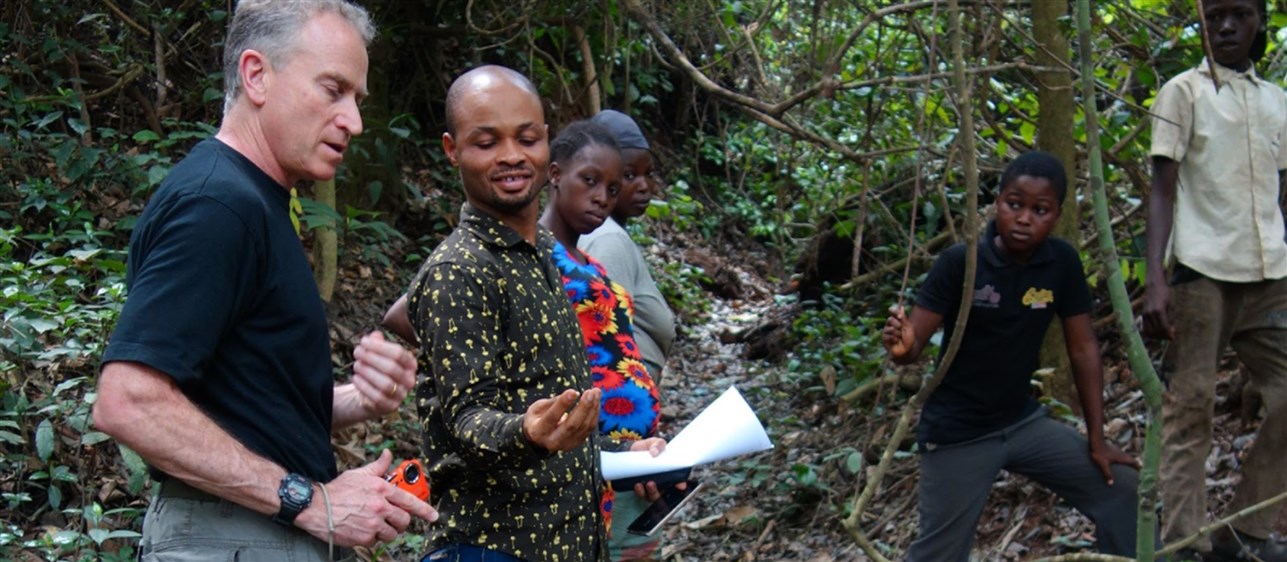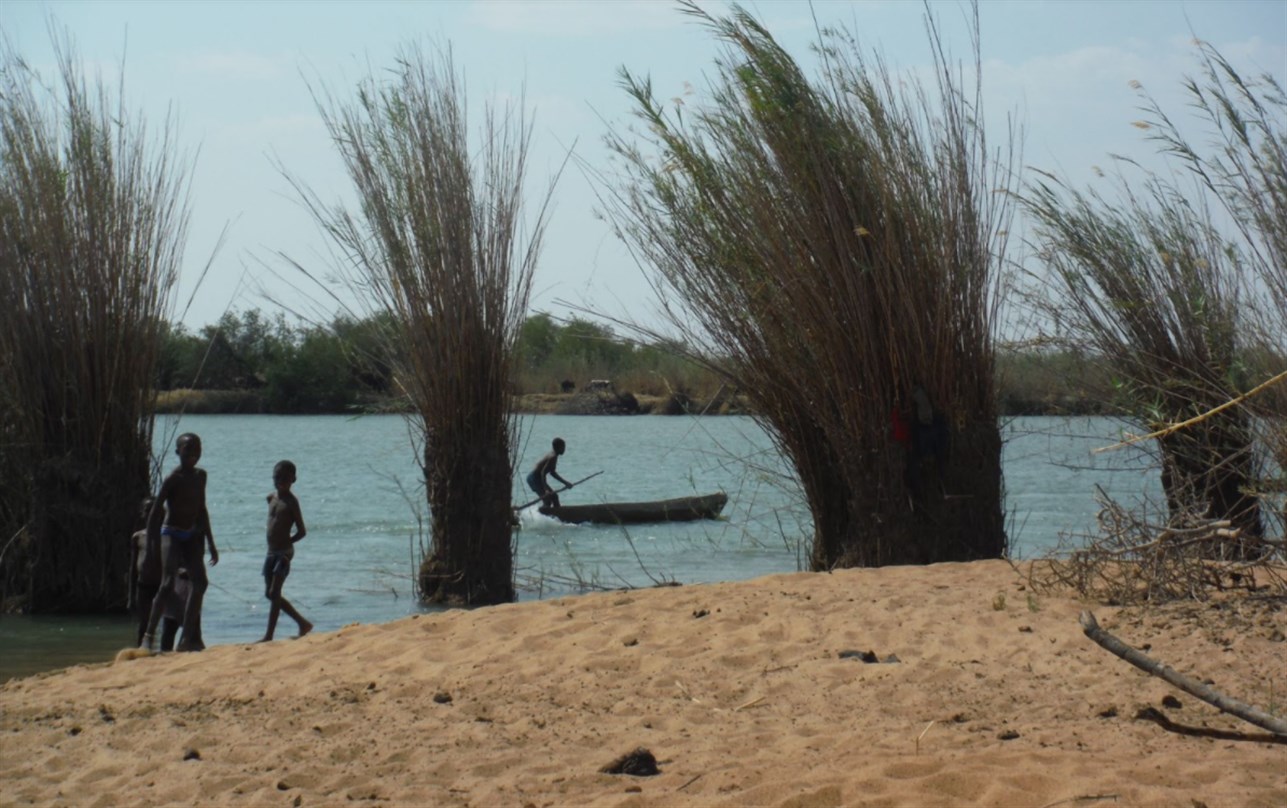
Date24.06.21
Welcome to the first in our new series of People Portraits, where we discover more about who’s who in Dar’s London office. And today we’re talking to John McCawley, Head of the Environment Team in London.
Hello John, and thank you for agreeing to be interviewed. So, can you tell us how you became Head of Environment in London?
I graduated with an Environmental Science degree from Sheffield University in the early 1980s. As a defined environmental career path was limited back then, I took a one-year post-graduate teaching course (PGCE) and became a junior school teacher with science as a specialism. Shortly afterwards, I moved to Kuwait, and then to Malaysia where I spent 11 years, rising to become Head of the Junior School section in a large British international school of around 2,000 students, as well as running and hiking through the tropical forests in my spare time.
After returning to the UK in 2001, as there were considerably more opportunities within the Environment sector, I took a 2-year distance learning MSc in Environmental Management and looked for a new role. At RSK Environment I worked mostly on the environmental impacts of oil and gas industry projects. Then I moved to Dar at the start of 2010, where I’ve acquired a broad range of experience across water, power, transport, master planning etc, and across the Middle East and Africa regions in the main. This experience, together with my broad ranging environmental academic background, enabled me to become Dar Environment HoD in London.
Can you tell us a little more about what the Environment team actually does? What services do you offer? What does a typical day look like?
Our primary role is to support all the technical engineering design trades within Dar Al-Handasah. This includes Planning and Urban Design, Landscape Architecture, Transportation, Structural and Civil Engineering, Geotechnical and Civil Engineering, Water Resources and Waste Water, Hydrology and Drainage, Electrical, Telecommunications, Mechanical and Industry, Economics and Project Management. We also share our skills across the wider Dar Group, where appropriate, supporting the environmental, social and sustainability aspirations of clients, as well as advising on associated environmental regulations.
Dar plans and projects often have to meet national and international legislative and regulatory requirements, such as those associated with international project financing. We carry out the necessary studies to achieve environmental (and social) compliance and consents.
Our secondary role comes from our inherent academic knowledge of the physical, biological and social environments, which allows us to guide plans and designs to more equitable and sustainable outcomes.
This has also involved seeking out the practical application of the United Nations Sustainable Development Goals (SDGs) to our projects. This may involve a limited number of SDGs, when applied to, say, a water supply project, but in contrast may cover almost the entire spectrum of SDGs when developing a city masterplan, where the drive is to ensure maximum outcomes for a sustainable society.
So there really is no typical day - we work on a multitude of projects, perhaps 25-30 at a time (as well as inputting to project proposals across all trades), crossing all levels of infrastructure planning and design. In my almost 12 years with Dar there has never been a quiet day; we have our fingers in so many pies.
What would you say are the biggest challenges in Environment right now?
The biggest challenge for Environment (and include Social Environment here) is bridging the gap between the urgent global environmental and social needs, and the requirement for continued infrastructure development. In many cases so that societies can better withstand such global challenges, including climate change. Our role is to support development but at the least harm to the environment upon which we all rely, and at least harm to society, especially vulnerable groups. This has always been the case, but what is different now, is how we respond to the rapidity and urgency of global change that we are facing as a planet.
And what are you most excited for, looking ahead?
Environmental and social impact assessments (ESIAs) of plans and projects take time and can sometimes be seen as an unacceptable bureaucratic delay. Advancements in digital data acquisition and assessment can streamline the ESIAs and the issuing of Environmental Statements. That said, much of our particular work takes place in remote parts of the world (such as Africa), where data availability remains limited, and so a more traditional means of environmental management will still be required to some degree.
A second bonus comes from sustainable international finance, which is driven by the need to mitigate and adapt to climate change effects, as well as to a rapidly expanding global population. Sustainable international finance requires recipient countries to exercise high standards of environmental and social safeguarding while improving their infrastructure. If they can’t demonstrate this, they don’t get the money. So this in turn makes our task of promoting good environmental and social management that bit easier.
Can you tell us about any projects the team are working on right now?
We’re currently working on around 30 projects at various stages of development, with a further dozen in a state of dormancy that may reappear at any time. These projects cover the UK as well as Angola, Nigeria, Tanzania, Qatar, Saudi Arabia, and Jordan.
Our projects include: spatial urban and industrial masterplans, development of ports, a city monorail, electrical power transmission lines, climate change assessment, urban road and drainage management, meeting the needs of project sustainability assessments (e.g. BREEAM, GSAS, SITES), geotechnical surveying, marine reclamation, coastal desalination plant, noise and air quality impacts, coastal eco-resort, contracts associated with airport development, ecological surveys in desert environments, strategic environmental and social assessments of water resources management plans, and a desert tourism project.
We’ve also recently become more involved with supporting other Dar Group companies in the UK. Presently, we’re working with Penspen, providing environmental and carbon net zero / sustainability inputs to a UK gas terminal project. And we contribute ecological, noise and air quality assessments to other UK urban development projects too.
What’s been the highlight of your career at Dar to date? And what do you enjoy most?
Working at Dar and supporting a diverse range of infrastructure projects naturally brings an equally diverse range of experiences. We need a thorough understanding of the engineering design, the landscapes, and people where we operate, and this isn’t always something you can get from a video-conference or a research paper.
Thus, we must travel to localities. So, one month we may be working on the Dubai International Airport runway, supporting the installation of aircraft noise monitoring equipment beneath the landing A380s. Another month we may be 1,000km deep into the Angolan bush on a survey lasting several weeks, and sleeping where we can find refuge.
We’ll each enjoy our tasks in different ways, but for me my highlight is being out in the environment and amongst the land and people where we hope our projects can bring future benefits.
What would you say to anyone considering a career in environmental and social management?
Different environmental management consultancies operate in different ways. For some, you need to be a specialist in a particular area, and generally can only contribute to projects in that field. Other consultancies may want you to have a broad range of skills and know about / have an academic background covering the range of physical, biological and social environments.
Personally, a broad science-based academic background has served me well while working at Dar. I am equally comfortable writing a report on the geology, soils and seismicity of a location, as I am writing a report on the biodiversity of a tropical rainforest, or the social needs of communities that may require resettlement.
To sum up, I would say the main requirements are to keep learning, maintain an enquiring mind, keep pushing the envelope, and work to find solutions, but not at the expense of people and environment. And ensure you start from a broad, solid and knowledge-based platform. We’re all in the job of designing solutions that permit development but also protect the environment and people. Nothing stays fixed; the world in which I work is not the world to come, so don’t stop learning!


